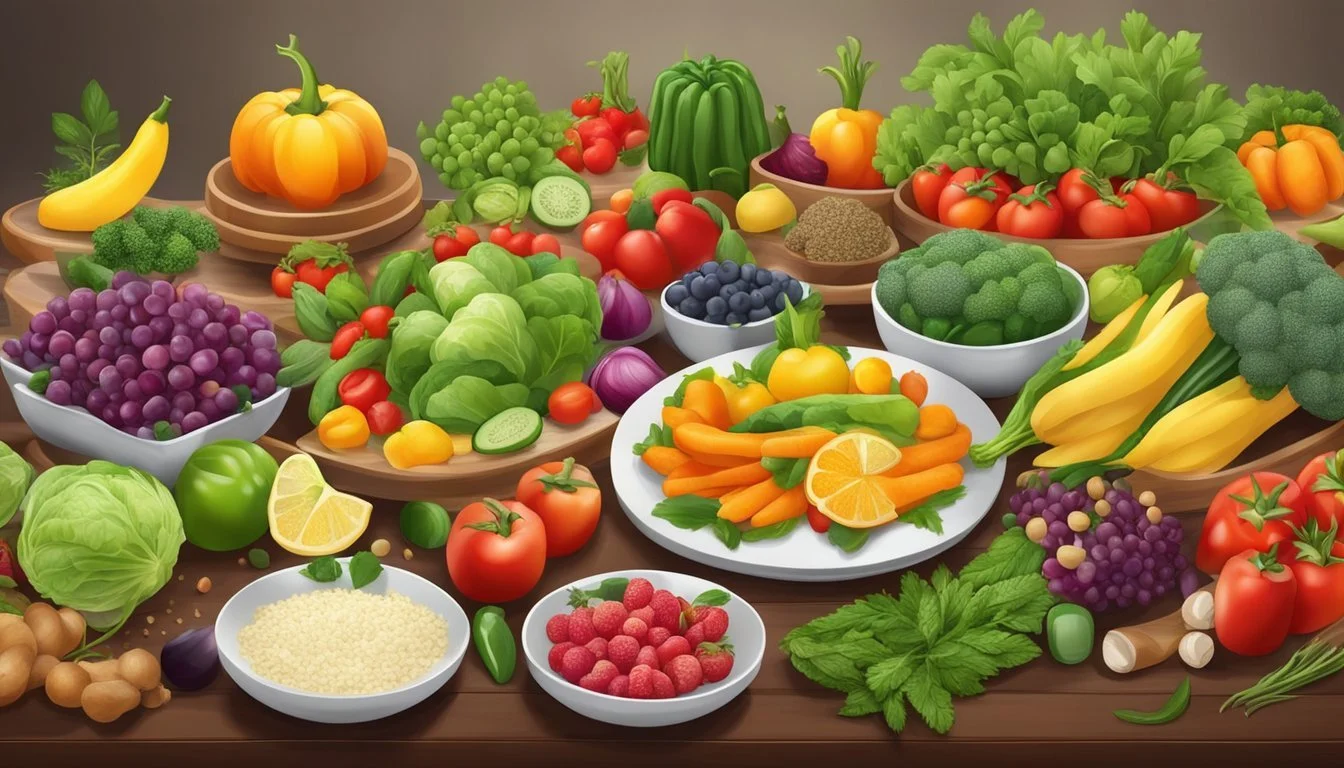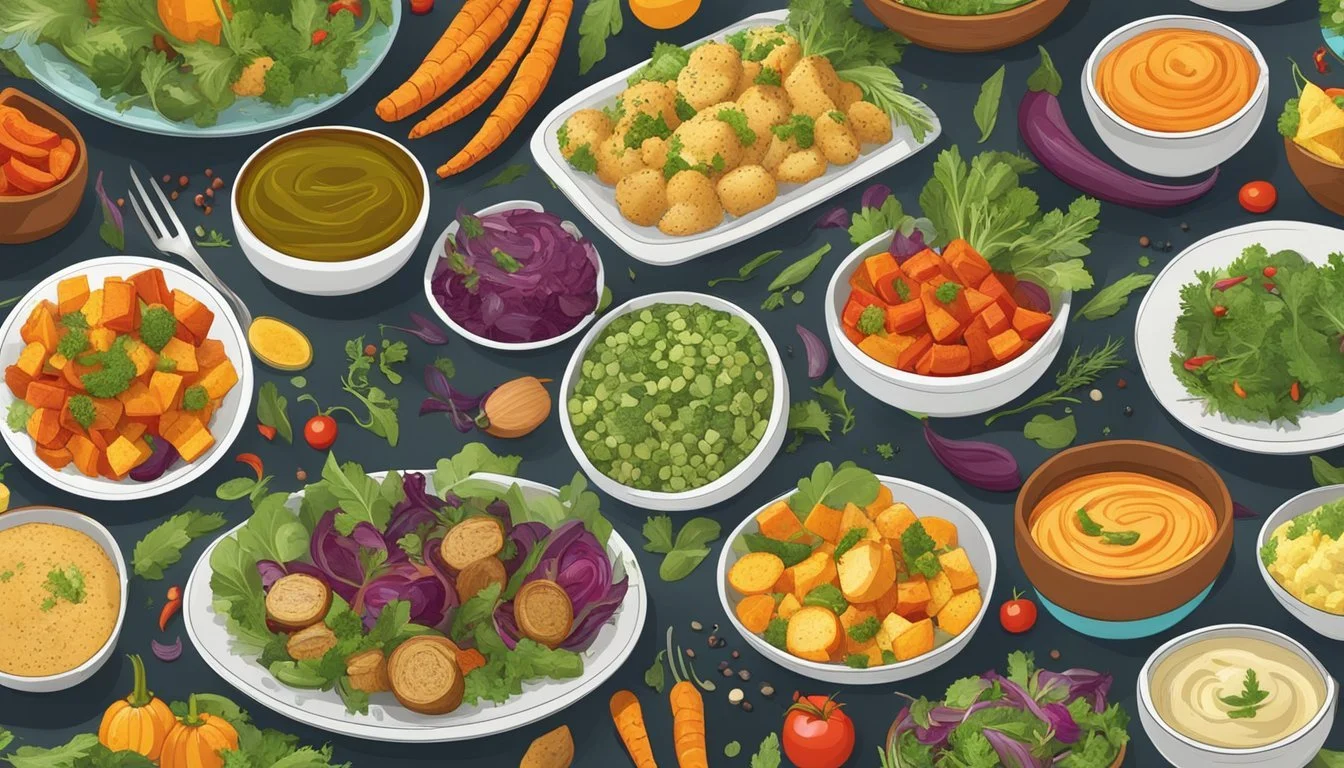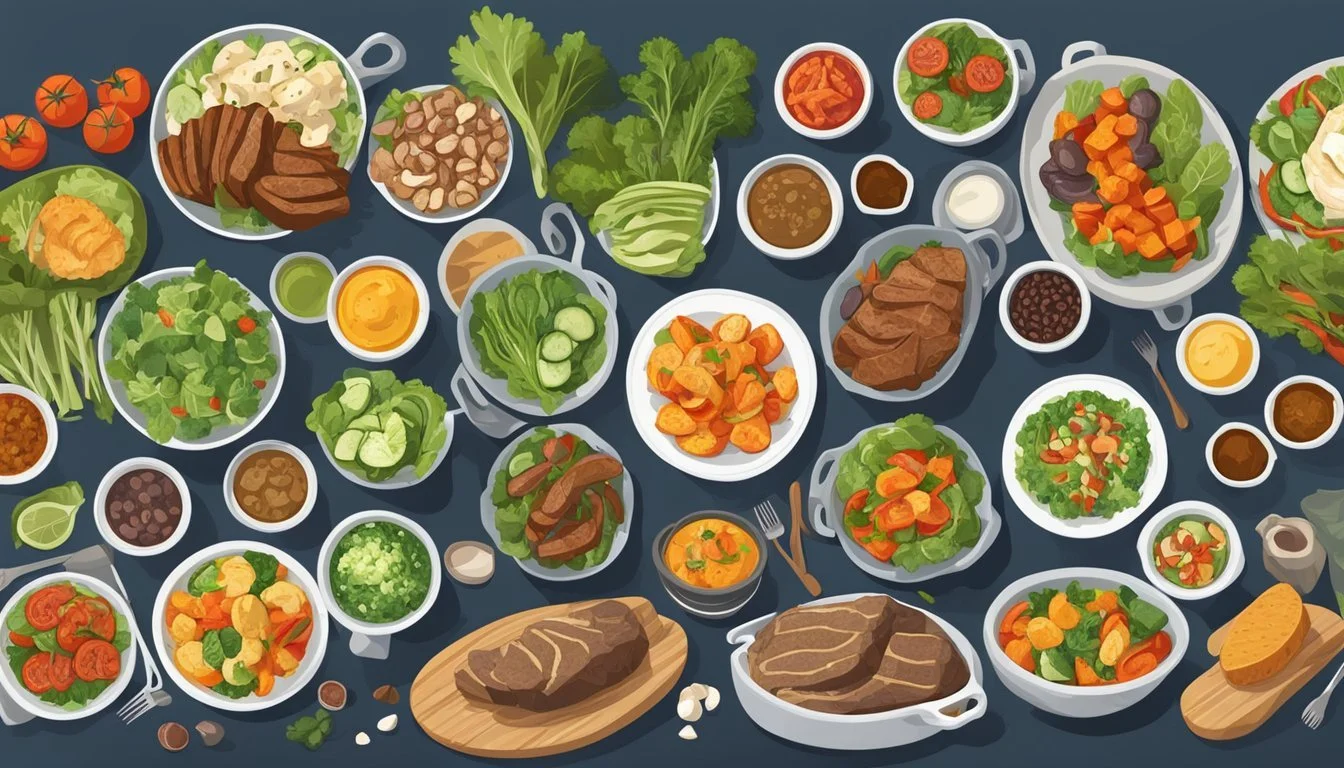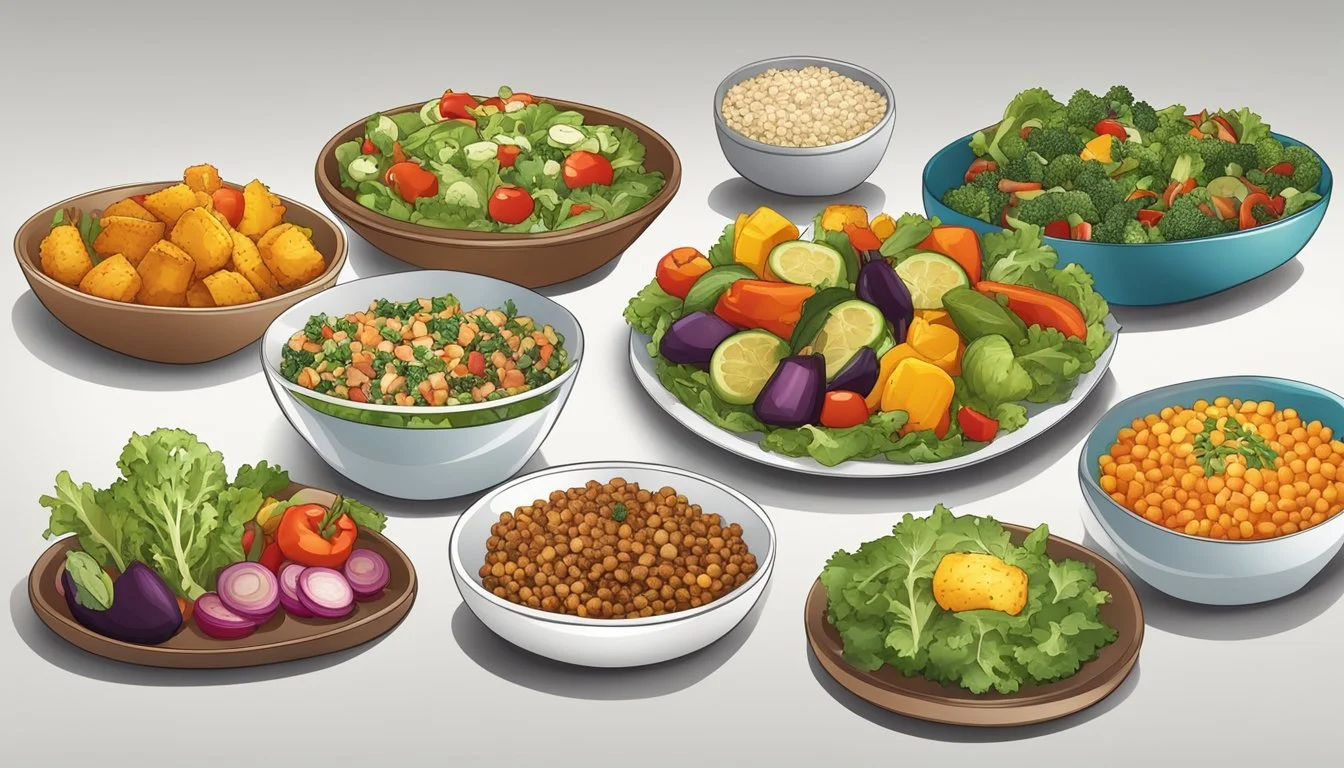The Best Paleo Diet Side Dishes for Dinner Parties
Delicious and Healthy Options
When hosting a dinner (What wine goes well with dinner?) party, offering a selection of side dishes that cater to various dietary preferences can be a thoughtful touch. For guests following the paleo diet, which emphasizes whole foods that could have been hunted or gathered in the Paleolithic era, traditional sides like creamy mashed potatoes or cheesy casseroles are off the menu. Instead, side dishes that are rich in vegetables, nuts, and healthy fats are the cornerstone of paleo-friendly dinner options.
The paleo diet encourages the consumption of foods like lean meats, fish, fruits, vegetables, and nuts, rooting for meals low in processed ingredients and high in nutritional value. Side dishes that align with these principles not only satisfy dietary restrictions but can also be a flavorful complement to any main course. Creative pairings such as roasted cauliflower "steaks" with shawarma spices or a vibrant asparagus dish with a hint of lemon and garlic demonstrate that paleo sides can be just as enticing and diverse as their conventional counterparts.
Focusing on ingredients that are naturally gluten-free and devoid of dairy, these paleo side dishes deliver a robust flavor profile while also ensuring that every guest has delicious options on the table. The combination of simplicity and nutrition in these side recipes can effortlessly elevate any dinner party, securing the host's reputation for both inclusivity and culinary prowess.
Understanding Paleo Diet Basics
When adopting a Paleo diet, it's essential to grasp the fundamentals. This includes its origins, the potential benefits it may offer, and the distinctive characteristics that make a meal Paleo-friendly.
Origins of the Paleo Diet
The Paleo diet, often referred to as the Paleolithic or Caveman diet, is premised on the idea of eating like our ancestors who lived before the advent of agriculture. It's predicated on the notion that modern humans should return to a pre-agricultural dietary pattern, which includes foods that could be hunted or gathered.
Benefits of Paleo Eating
Individuals often turn to the Paleo diet in pursuit of various health benefits. By its nature, the diet:
Excludes processed foods: It encourages eating whole, unprocessed foods.
Promotes healthy digestion: The diet avoids grains and dairy, which can be difficult for some to digest.
Emphasizes consumption of nutrient-dense foods: These foods provide essential vitamins and minerals.
Some proponents suggest that Paleo eating can lead to improved energy levels and better weight management.
Key Components of a Paleo-Friendly Meal
The Paleo diet is characterized by the inclusion of certain food groups and the exclusion of others. Below is a breakdown of what typically constitutes a Paleo-friendly meal:
Proteins: Lean meats, fish, and eggs form the backbone of the Paleo protein sources.
Vegetables and Fruits: These should be varied to ensure a wide range of nutrients and fiber.
Fats: Healthy fats from nuts, seeds, avocados, and certain oils are integral.
Exclusions: Grains, legumes, dairy, refined sugar, and processed foods are avoided.
Here's a simple overview of Paleo Diet Components:
Included Foods Excluded Foods
Lean meats Grains
Fish and seafood Legumes
Eggs Dairy
Fresh vegetables Refined sugars
Fresh fruits Processed foods
Nuts and seeds -
Healthy oils (e.g., olive and coconut) -
This diet often overlaps with Whole30 principles, a stricter month-long dietary program focused on similar whole food consumption and elimination of potentially problematic foods.
Selecting Ingredients for Paleo Side Dishes
When preparing Paleo side dishes, the selection of whole food ingredients is crucial. They should prioritize nutrient density and adhere to the guidelines of the Paleo diet—focusing on foods that could be hunted or gathered.
Choosing Vegetables and Fruits
Vegetables and fruits form the cornerstone of Paleo side dishes, providing essential vitamins, fiber, and antioxidants. For optimal health benefits and flavor, one should choose a variety of colors and types. Root vegetables like sweet potatoes are excellent for their complex carbohydrates and fiber. Leafy greens — such as spinach — offer iron and key vitamins. Additionally, incorporating seasonal fruits like strawberries can add natural sweetness and vitamin C to salads.
Root Vegetables: Sweet potatoes, carrots, beets
Leafy Greens: Spinach (What wine goes well with spinach?), kale, arugula
Seasonal Fruits: Strawberries, apples, pears
Utilizing Nuts and Seeds
In Paleo cooking, nuts and seeds are valued for their healthy fats, proteins, and textures. They can be added to side dishes for crunch or used in dressings for depth. Popular Paleo-friendly choices include almonds, walnuts, and pumpkin seeds. When selecting nuts and seeds, one should opt for raw or lightly roasted varieties without added oils or salts.
Nuts: Almonds, walnuts, cashews
Seeds: Pumpkin seeds, sunflower seeds, chia seeds
Herbs and Spices to Enhance Flavor
Herbs and spices are imperative for creating flavorful Paleo side dishes without relying on artificial additives. Fresh herbs like garlic contribute bold flavors and health benefits, while cilantro and basil offer a fresh, aromatic lift to dishes. Spices such as cumin and paprika not only enhance taste but also contain beneficial antioxidants.
Fresh Herbs: Garlic, cilantro, basil
Dried Spices: Cumin, paprika, cinnamon
Easy-to-Prepare Paleo Side Dishes
Preparing a successful dinner party involves having an array of dishes that cater to various tastes and dietary needs. When it comes to paleo side dishes, the focus is on minimally processed foods mainly consisting of vegetables, fruits, and nuts. These easy-to-prepare options can ensure that your guests enjoy wholesome, delicious, and compliant additions to the main course.
Vegetable-Based Sides
For a nourishing complement to any meal, vegetable-based sides are not just healthy but also incredibly versatile. Roasted vegetables (What wine goes well with roasted vegetables?) can be a simple yet flavorful choice. By chopping up a selection of carrots, beets, and sweet potatoes, tossing them with olive oil and a sprinkle of sea salt, and roasting them in the oven or air fryer, one creates an easy, colorful side dish. Sautéed greens like kale or Swiss chard with garlic are another nutrient-dense option that can be whipped up quickly on the stovetop.
Roasted Vegetables: 425°F for 20-25 minutes
Sautéed Greens: Medium heat for 3-5 minutes
Fruit-Inspired Accompaniments
Fruits bring a natural sweetness and brightness to the paleo side dish repertoire. Simple to prepare, a Paleo Strawberry Spinach Salad with homemade strawberry dressing can elevate the freshness of the meal. For a warm side, baked apples sprinkled with cinnamon make a comforting addition. These fruit-inspired accompaniments offer a quick and delightful contrast to savory dishes.
Strawberry Spinach Salad: Combine in a large bowl
Baked Apples: Bake at 350°F for 30-40 minutes
Innovative Uses of Cauliflower
Cauliflower is a paleo favorite due to its flexibility and texture. Cauliflower rice is a popular alternative to grain-based sides and can be easily made using a food processor and quick sautéing in a pan. For a more robust side, try making shawarma roasted cauliflower steaks; seasoned and roasted in the oven, they offer a hearty, plant-based option.
Cauliflower Rice: Pulse in food processor, then sauté
Cauliflower Steaks: Roast at 400°F for 15-20 minutes
By utilizing these easy-to-prepare paleo side dishes, hosts can offer a range of tasty and health-conscious options that are sure to please all guests. Whether using an oven, stovetop, or even an Instant Pot or air fryer for meal prep, these sides can complement any main dish with minimal effort.
Cooking Techniques for Maximum Nutrition
When preparing Paleo diet side dishes, selecting the right cooking method not only enhances the taste but also maximizes the nutritional benefits of the ingredients. Understanding how different techniques affect the content of vitamins, minerals, and antioxidants can help in creating nutritious and delicious sides.
Roasting and Baking
Roasting vegetables in an oven or baking Paleo-friendly ingredients has several nutritional advantages. These methods help in preserving the natural flavors and maintaining a high content of vitamins and minerals. For example:
Sweet potatoes: Slice and toss in olive oil, baking until crispy, retains their high fiber, vitamin, and antioxidant content.
Vegetables like broccoli or Brussels sprouts: Roasting can enhance their natural sweetness and crisp texture while keeping essential nutrients intact.
When using an air fryer, these methods provide a lower-fat alternative to frying, preserving nutrition without excess oil.
Steaming and Boiling
Steaming is a gentle method that minimizes nutrient loss, making it an excellent choice for preparing Paleo side dishes. In contrast, boiling may cause water-soluble vitamins like vitamin C and some B vitamins to leach into the water. To counteract this:
Use minimal water: To steam vegetables like carrots or green beans, ensuring they retain most of their vitamins.
Short cooking times: This prevents the breakdown of heat-sensitive nutrients.
Steamed vegetables often pair well with herbs and spices to enhance flavor while maintaining the benefits of a Paleo diet.
Sautéing and Frying
Sautéing in a small amount of quality fat like coconut oil or olive oil can make nutritious Paleo sides without compromising on taste. Cooking at medium heat:
Retains more nutrients than high-temperature frying.
Prevents the formation of potentially harmful compounds.
While traditional frying is typically avoided on a Paleo diet, using an air fryer for a similar effect without the need for excessive oil can be a healthier option for achieving that desirable crispness in side dishes.
Specialty Paleo Side Dishes
Crafting Paleo side dishes for dinner parties can involve accommodating various dietary preferences while adhering to Paleo principles. This section presents options tailored towards Whole30, Keto, and dairy-free requirements.
Whole30 Approved Sides
Whole30 approved sides adhere strictly to the guidelines of eliminating added sugars, alcohol, grains, legumes, soy, and dairy. These dishes focus on whole, unprocessed ingredients:
Sweet Potato Soup: A staple for the Whole30 meal plan, this soup is made rich with coconut milk and is seasoned with fresh herbs like thyme and bay leaf.
Garlic Roasted Asparagus: Tossed with olive oil and crushed garlic, then roasted to perfection, it's a nutrient-rich option that's also highly flavorful.
Keto-Friendly Options
Keto-friendly side dishes prioritize low-carb, high-fat ingredients, aligning with ketogenic dietary goals while maintaining Paleo integrity:
Cauliflower Rice: A versatile side that can mimic the texture and function of traditional rice, but with a fraction of the carbs.
Roasted Cauliflower "Steak": Sliced thick and roasted with savory spices, it serves as a hearty, low-carb accompaniment.
Dairy-Free Delights
The Paleo diet typically excludes dairy, which makes these side dishes suitable for both Paleo and dairy-free guests:
Butternut Squash Soup: Pureed for a creamy texture without any dairy, often enhanced with a touch of cinnamon or nutmeg.
Strawberry Spinach Salad: This combines fresh spinach and sweet strawberries, dressed with a tangy balsamic vinaigrette. It's a refreshing contrast to heavier dishes.
Recipe Ideas for Dinner Parties
When hosting a dinner party, offering a variety of paleo side dishes can cater to guests’ dietary preferences while providing nutritious and satisfying options.
Crowd-Pleasing Vegetable Dishes
Vegetables are a versatile foundation for paleo sides. Roasted cauliflower steaks make a hearty plant-based option, seasoned with shawarma spices for an aromatic twist. For a dish that's both vibrant and flavorful, one can prepare sweet potato fries, baked to crispy perfection and lightly salted, perhaps accompanied by a paleo-friendly aioli.
Satisfying Starchy Sides
Starchy sides are ideal for guests seeking filling and comforting dishes. A popular choice, paleo mashed potatoes, using a dairy substitute such as almond milk, can satisfy the craving for traditional comfort food. Meanwhile, butternut squash can be transformed into a delicious puree or roasted with herbs for a sweet and savory accompaniment.
Refreshing Salads and Soups
Salads and soups are perfect for starting a meal or serving alongside a protein. A cucumber salad, tossed with a zesty dressing, offers a refreshing crunch. Soups, particularly those that are rich and hearty like a creamy potato soup made with coconut milk, can be a warming addition. These soups capture the essence of paleo eating by focusing on whole, unprocessed ingredients.
Seasoning and Flavor Enhancements
When creating side dishes for a Paleo dinner party, the difference often lies in the smart use of seasonings to enhance flavors without non-compliant Paleo ingredients.
Leveraging Lemon and Citrus
A squeeze of lemon adds a fresh zing to a variety of Paleo side dishes. For instance, lemon's acidity can highlight the natural flavors of garlic green beans, making it a staple in such recipes. Citrus zest, be it lemon, lime, or orange, can also impart a delightful aroma and complexity to simple vegetable dishes.
Garlic and Onion Infusions
Side dishes infused with garlic and onions bring warmth and savory depth to the Paleo table. These alliums act as a flavor foundation for many Paleo-approved recipes. Garlic green beans, for instance, are not only enhanced by the addition of lemon but also greatly benefit from the rich, earthy notes of sautéed garlic and the subtle pungency of onions.
Balancing Spices and Herbs
A careful selection of spices and herbs can beautifully balance and complement the main ingredients of any Paleo side dish. Spices like cumin, paprika, and black pepper add a touch of heat and complexity, while herbs such as rosemary, thyme, and cilantro contribute freshness and tie different flavors together.
Spices to consider:
Cumin
Paprika
Black Pepper
Herbs for freshness:
Rosemary
Thyme
Cilantro
In using these seasonings, chefs must ensure not to overpower the intrinsic flavors of the primary vegetables or proteins but rather to accentuate and uplift the natural profiles of the dishes they are serving.
Accommodating Dietary Restrictions
When hosting a dinner party with paleo side dishes, it's essential to consider guests with food allergies and various dietary restrictions. By offering alternatives to common allergens and planning for varied dietary needs, hosts can ensure everyone enjoys a safe and delicious meal.
Alternatives to Common Allergens
Dairy:
Instead of butter, use coconut oil or olive oil for cooking and as a base in dressings.
Opt for paleo-friendly nut cheeses or nutritional yeast to add a cheesy flavor without dairy.
Grains:
Replace grains with cauliflower rice or spiralized vegetables to maintain the texture and bulk of grain-based sides.
Additives and Preservatives:
Craft dishes from whole, unprocessed ingredients to avoid hidden additives.
When seasoning, choose fresh herbs and spices rather than pre-made mixes that may contain non-paleo ingredients.
Planning for Varied Dietary Needs
Healthy Eating:
Emphasize a variety of colorful vegetables, which are not only compliant with a paleo diet but also cater to a wide range of dietary frameworks focused on health.
Provide lean proteins such as grilled chicken or fish as side options to complement the vegetable sides.
Paleo Diet:
Check recipes for hidden non-paleo ingredients such as soy, legumes, or sugar, and find suitable substitutions.
Always inform guests about the ingredients in each dish so they can make informed choices aligned with their dietary restrictions.
Advanced Preparation and Cooking Tips
When hosting a dinner party, efficient use of time and kitchen appliances is key to a stress-free evening. These tips will ensure Paleo side dishes are prepped and cooked with relative ease.
Utilizing Cooking Appliances
Instant Pot: This versatile appliance is a time-saver for cooking sides. For example, one can make cauliflower rice in just about 2 to 3 minutes once the Instant Pot has reached pressure. Simply add chopped cauliflower florets with a tablespoon of water and select the 'Rice' setting.
Oven: Roasting vegetables like kale, spinach, and asparagus brings out a delightful flavor and can be done alongside main dishes. Preheat the oven to 400°F (200°C), toss the vegetables in olive oil and seasonings, then spread them evenly on a baking sheet to ensure they cook evenly.
Meal Prepping and Planning
Pre-cut Vegetables: To reduce cooking time, one can chop vegetables like cauliflower, kale, and asparagus ahead of the party. Store these in airtight containers in the fridge to maintain freshness.
Batch Cooking: Consider batch cooking sides that reheat well, such as kale chips or cauliflower rice. This allows for quick reheating just before serving, ensuring that sides are warm and inviting for guests.
Assembling Ingredients: Gather all spices, oils, and other non-perishable ingredients for each dish in advance. This streamlines the cooking process and minimizes the need to search for items amid the bustle of dinner preparation.
Conclusion
Selecting the perfect Paleo side dishes for dinner parties can transform an everyday meal into a memorable feast. Side dishes following the Paleo dietary framework emphasize whole, unprocessed ingredients like vegetables, fruits, nuts, and lean meats, adhering to the principles of healthy eating.
Cauliflower Rice and Roasted Asparagus with Lemon and Garlic stand out as favorites for their nutritional value and ease of preparation. They provide the essential fibers, vitamins, and minerals necessary for a balanced Paleo meal. One may also consider Oven-Roasted Veggies as a versatile option, appealing to both the culinary novice and the seasoned cook.
To vary the menu:
Mashed cauliflower offers a comforting, lower-carb alternative to traditional mashed potatoes.
Shawarma Roasted Cauliflower "Steak" brings an exotic twist to the table.
For a touch of sweetness, Butternut Squash Soup serves as a delightful prelude to the main course.
In crafting Paleo side dishes, cooks are encouraged to be imaginative, utilizing a palate of Paleo-friendly ingredients to create dishes that are as nutritious as they are delectable. The simplicity of the recipes ensures that the inherent flavors of the natural components are celebrated, satisfying both the health-conscious guest and the flavor-seeker.
Whether it is a casual gathering or an elegant affair, the variety of easy-to-make, delicious Paleo side dishes are poised to complement any main dish, satisfying the dietary preferences and taste buds of all attendees.











